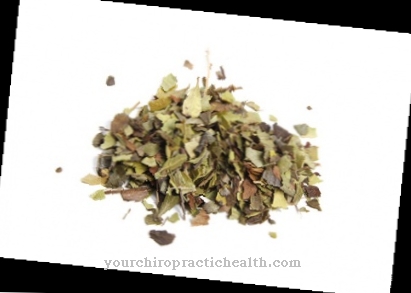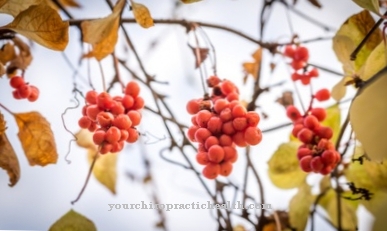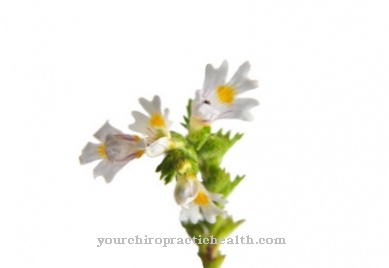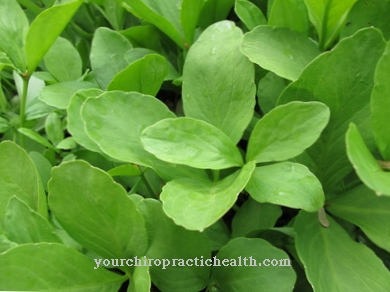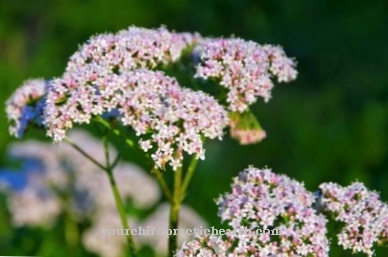It is not for nothing that it is also called "Ginseng of the Alps": The Masterwort Already in the Middle Ages it was considered a panacea, even a magic remedy. It has an antipyretic, analgesic and anti-inflammatory effect; it also helps as an antidote in chronic and acute intoxication conditions.
Occurrence & cultivation of the masterwort

Depending on the location, the grass-green plant can grow up to 100 cm high. It has three-lobed, roughly serrated leaves and forms large, umbrella-like umbels full of small white flowers between June and August. The rhizome, i.e. the rootstock of the plant, is medically relevant. Its healing powers are greatest in early spring and late autumn, so these are also the harvest times. The masterwort gives off a sharp, aromatic odor. Sensitive people can react with dermatitis if they come into contact with the skin.
Effect & application
After the harvest, the roots are cleaned thoroughly with water and a brush, then cut into small slices and dried in an airy place. Their possible uses are extremely diverse. For example, chewing a small portion of masterwort helps relieve nausea, stomach pain and indigestion. Toothache can also be relieved in this way.
Either a tea or a tincture is prepared for internal consumption, the latter is also available as a ready-made preparation in pharmacies. Thanks to its essential oils, Imperatoria ostruthium makes it easier to breathe in asthma and colds and has an expectorant effect. Their antibacterial properties also ensure that bronchitis heals faster.
Together with the essential oils, tannins and bitter substances stimulate digestion, promote the production of bile and relieve flatulence. The masterwort with its valuable ingredients (in addition to the already mentioned furanocoumarins, resins and flavonoids) is a powerful remedy for all kinds of fevers and, when taken regularly, reduces the symptoms of menopause.
Externally, either the tincture or a paste made from masterwort powder, mixed with a little warm water. Poultices are given on ulcers, abscesses and poorly healing wounds. They also have a positive effect on acne. Bleeding gums can be stopped by dabbing the gums with masterwort tincture. For bronchitis and coughs, a steam bath with Imperatoria ostruthium can also be used in addition to internal consumption.
About two tablespoons of finely chopped pieces of root are poured over a liter of boiling water in a bowl. Place the bowl on the table, bend over it and inhale the steam for about 10 to 15 minutes (the head and upper body should be covered with a towel). The "master of all roots" is not suitable for treating heated, hyperkinetic diseases.
In the Middle Ages the plant was thought to have magical powers. They wanted to drive out witches by smoking with Meisterwurz, this traditionally took place especially at Christmas time. If you carried a piece of the root with you, it should strengthen your physical as well as your mental strength. The plant was even fed to horses and cows for this purpose.
Importance for health, treatment & prevention
The effect of the masterwort as a universal remedy was somewhat overestimated in the Middle Ages - it was nicknamed Remedium divinum (divine remedy) and was even used for plague-like diseases and cancer - so it is not given enough attention today. Perhaps it has to be rediscovered by modern phytotherapy.
It is their antibacterial properties that make them interesting in the age of increasing antibiotic resistance - for treating inflammation in the gastrointestinal area as well as for use in the first-aid kit. For the future, the plant could potentially play an important role in the fight against aggressive hospital germs, as a preventive measure against the spread of noroviruses and against borreliosis.
Masterwort is in its traditional areas of application, as is popularly known Emperor root means that it is already a valuable alternative to conventional drugs today. If you don't want to grab the chemical club because of every cold, you will be grateful for this powerful yet gentle remedy from nature. For chronically ill people in particular, it is a great relief to save on strong medication and to be able to reduce their sometimes agonizing side effects. In the folk medicine of the Alpine countries, a traditional masterwort schnapps is still very popular today.
Classical homeopathy describes Imperatoria ostruthium as a plant with a truly regal nature, which symbolizes our self-confidence and helps us to be more secure. Here the masterwort is mainly used for stomach and skin diseases. Popular veterinary medicine uses the plant, among other things, as a means against foot-and-mouth disease.
If you offer the masterwort a moist, nutrient-rich soil and a sunny to partially shaded location, it can also be cultivated in the flatlands. Climatically adapted and hardened plants are available in stores, the reproduction takes place in autumn by dividing the root stocks. Seed cultivation is seldom successful, as this requires a sufficient cold phase.


